
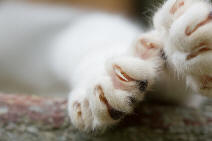
Also known as 'onychectomy', the term declawing is somewhat of a misnomer as not only is the claw removed but also the third (distal) phalanx (bone). The procedure is usually performed on the front feet only.
It is almost unheard of outside of the United States and Canada, and even there it is declining in popularity with many veterinarians refusing to declaw cats unless absolutely medically necessary. In 2003, declawing was banned in parts of Los Angeles. It is illegal in almost every other country.
There are three methods of declawing cats, all three will be performed under general anesthesia. Most veterinarians recommend declawing at the same time as your cat is spayed or neutered.
Resco clipper method (guillotine method) - This is the most common method of declawing and involves the use of a guillotine nail trimmer to cut through the bone. The problem with this method is that the nail grows from the last phalanx and if it isn't removed in its entirety, there is a possibility that the claw will re-grow, when this occurs, the regrowth is usually deformed and will requite surgical removal.
Disarticulation method - This involves the separation of the third phalanx by carefully disconnecting the tendons attaching the third phalanx to the second phalanx. It is more intensive than the resco clipper method, however as the bone is completely removed, there is zero chance of the claws growing back.
Laser method- The method used for laser declawing is the same as the disarticulation method, however a laser replaces the scalpel. Advantages are that there is less bleeding, however it is a more expensive surgery. Advantages of this type of surgery include less pain and a faster recovery time.
Tendonectomy - This procedure doesn't fall under the category of declawing as the claw isn't removed, instead, the ligament underneath your cat's toe is cut, preventing him from protract his claws. Weekly nail trimming is necessary on cats who have undergone this surgery as they are no longer able to scratch their claws.
After declawing, the open site is either stitched or glued closed and then bandaged. All of these procedures will require a 1-2 day stay in hospital along with analgesics post operatively. Once your cat is discharged, he will need to have shredded paper in his litter tray until his feet are healed.
What is the purpose of declawing?
Declawing is generally performed to prevent cats from scratching and damaging furniture or family members (both pet and human). Cats do scratch, this helps to remove the loose, outer layer of the claw as well as keeping the claws sharp, it gives the cat an opportunity to stretch his forelegs, shoulders and back (a bit like a stretch when we wake up), and cats have scent glands in their paw pads which release pheromones which calm your cat.
Some people with compromised immune systems such as those with AIDS, diabetics, organ recipients or those undergoing chemotherapy may opt for declawing to reduce the risk of infection resulting from a scratch.
Yes, declawing doesn't come without risks. The most common being:
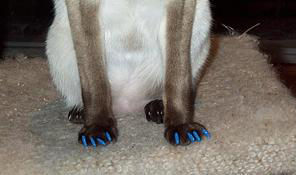 There are several alternatives to declawing but the main goal is to prevent your cat clawing and damaging furniture.
There are several alternatives to declawing but the main goal is to prevent your cat clawing and damaging furniture.
Behaviour modification:
Claw covers:
Kitty manicure:
Occasionally there are medical reasons in which it will be of benefit to the cat to declaw but these are few and far between. Medical reasons may include a tumour, irreversible damage to the claw, claws that can't retract and paronychia (nail bed infections). Usually this would result in only one digit being declawed and not all.
If you must declaw your cat or adopt a cat who has already been declawed then please keep him indoors.
While not medical, in some cases it is a choice between declawing a cat or surrendering him to a shelter or euthanasia.
Also see:
Spaying a cat Neutering a cat Cat surgery
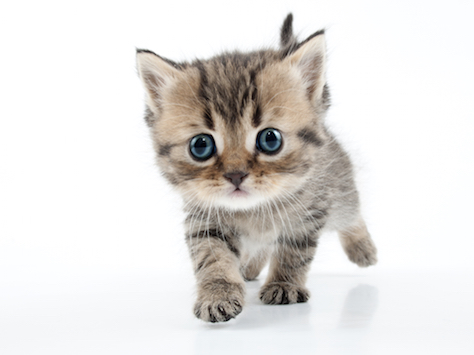 How to Socialize a Kitten With New People
By Cheryl Lock
If you just brou
How to Socialize a Kitten With New People
By Cheryl Lock
If you just brou
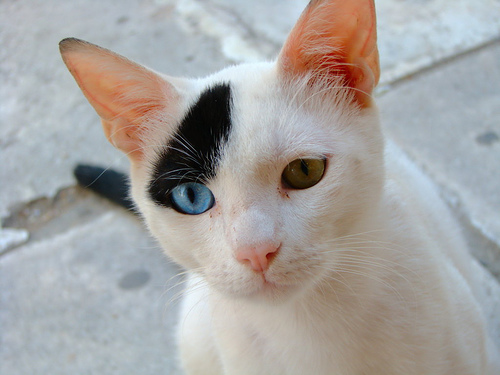 How to Choose an Experienced Cat Breeder
Are you in search of a purebred cat? Picki
How to Choose an Experienced Cat Breeder
Are you in search of a purebred cat? Picki
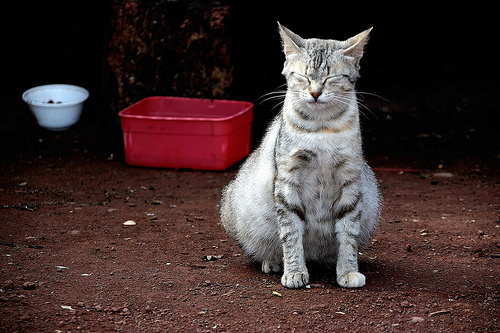 A Quick Guide to Looking After a Pregnant Cat
Pregnant cat on your hand
A Quick Guide to Looking After a Pregnant Cat
Pregnant cat on your hand
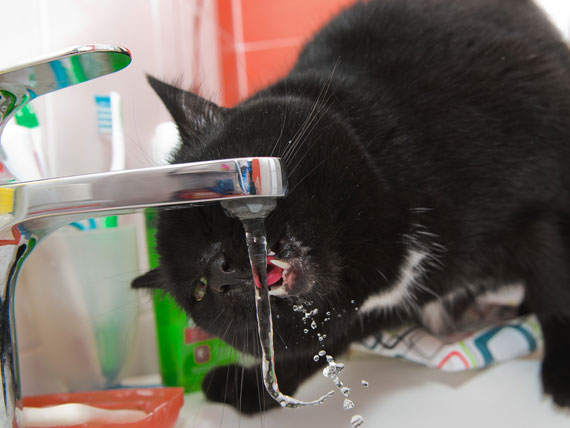 How Drinking Water Could Save Your Cat's Bladder
Why Your Cat Needs to Drink More
How Drinking Water Could Save Your Cat's Bladder
Why Your Cat Needs to Drink More
 Smart Shopping For Cat Food
What Should I Feed My Cat?
What
Smart Shopping For Cat Food
What Should I Feed My Cat?
What
Copyright © 2005-2016 Pet Information All Rights Reserved
Contact us: www162date@outlook.com